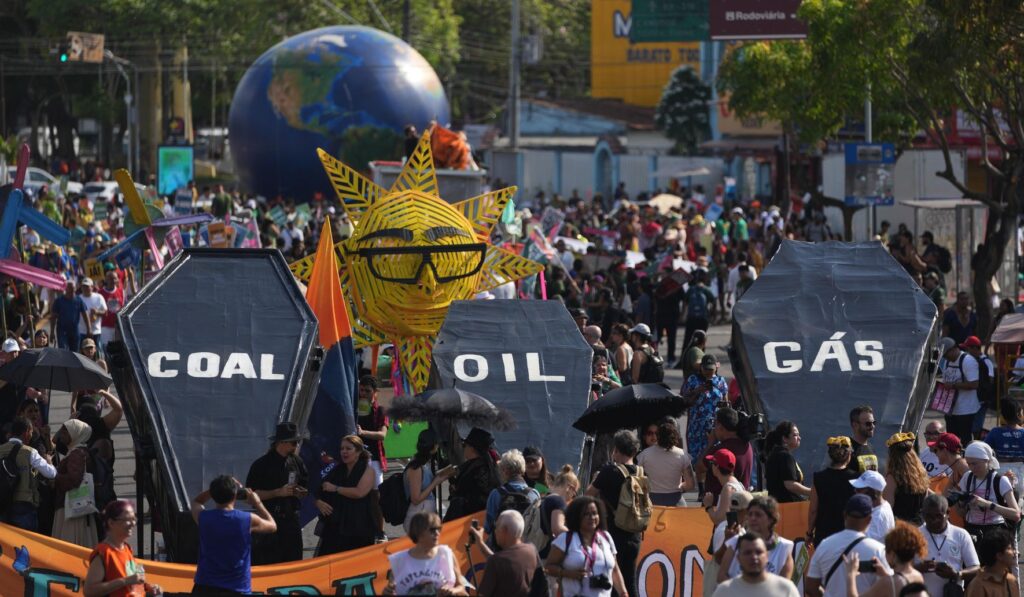At COP30, visible street protests and theatrical displays met negotiators, with activists using symbolic clothing and mass demonstrations to press climate demands while officials tried to navigate complex talks on energy and policy.
Some wore black dresses to signify a funeral for fossil fuels. Hundreds wore red shirts, symbolizing the blood of colleagues fighting to protect the environment. And others chanted and waved huge flags, turning parts of the conference into a moving theater of grievance.
The crowd scenes at COP30 were loud and unmistakable, but noise does not equal policy. Activists staged eye-catching moments that grabbed headlines, yet the real questions at these talks are about energy reliability, economic impact, and international commitments that actually translate into emissions reductions. Those are technical and political problems that can’t be solved by costumes and slogans.
Watching the pageantry, many voters wonder whether activists understand the trade-offs involved in rapid energy transitions. Republican voters and policymakers argue that preserving jobs, keeping energy affordable, and protecting national security should come first. They see a need for honest debate about how to phase changes without wrecking communities that depend on conventional energy jobs.
There is room for environmental stewardship without abandoning practical governance. Market-driven innovation, American energy leadership, and targeted technology investments win cleaner air and consistent power more reliably than moralizing performances. Republicans favor solutions that safeguard families’ livelihoods and encourage breakthrough technologies in a way that does not compromise grid stability.
Delegates at COP30 face stark choices: deliver binding commitments that are realistic, or end up with promises that countries can’t or won’t meet. Negotiations must address financing, verification, and the uneven economic capacities of different nations. Without workable plans on those fronts, public displays may sway attention but do little to change global emissions paths.
There is also the question of fairness and transparency. Policymakers should ask who bears the cost of rapid transitions and how those costs are distributed. A party that emphasizes fairness insists on clear timelines, measurable outcomes, and protections for workers affected by policy shifts rather than vague pledges and symbolic funerals for entire industries.
Energy security remains a central concern that activists on the sidelines often gloss over. Reliable electricity and fuel are not optional for hospitals, factories, and farms. Republican policymakers argue that a sensible path is to expand American energy production where needed while investing in research and scaling technologies that can substitute without raising prices or risking outages.
Practical climate policy means pairing ambition with humility about current limits and readiness. It is possible to support environmental goals and also demand accountability, careful planning, and respect for the economic realities people face. Policymakers should favor approaches that spur innovation, protect jobs, and improve living standards across the globe.
The visual of protesters in black and red will be replayed, but negotiators must deliver real results. Lawmakers should push for transparent agreements that include enforcement mechanisms, funding plans, and transition support for affected workers and communities. That approach keeps environmental objectives within reach while protecting the economic foundations that make long-term progress possible.



